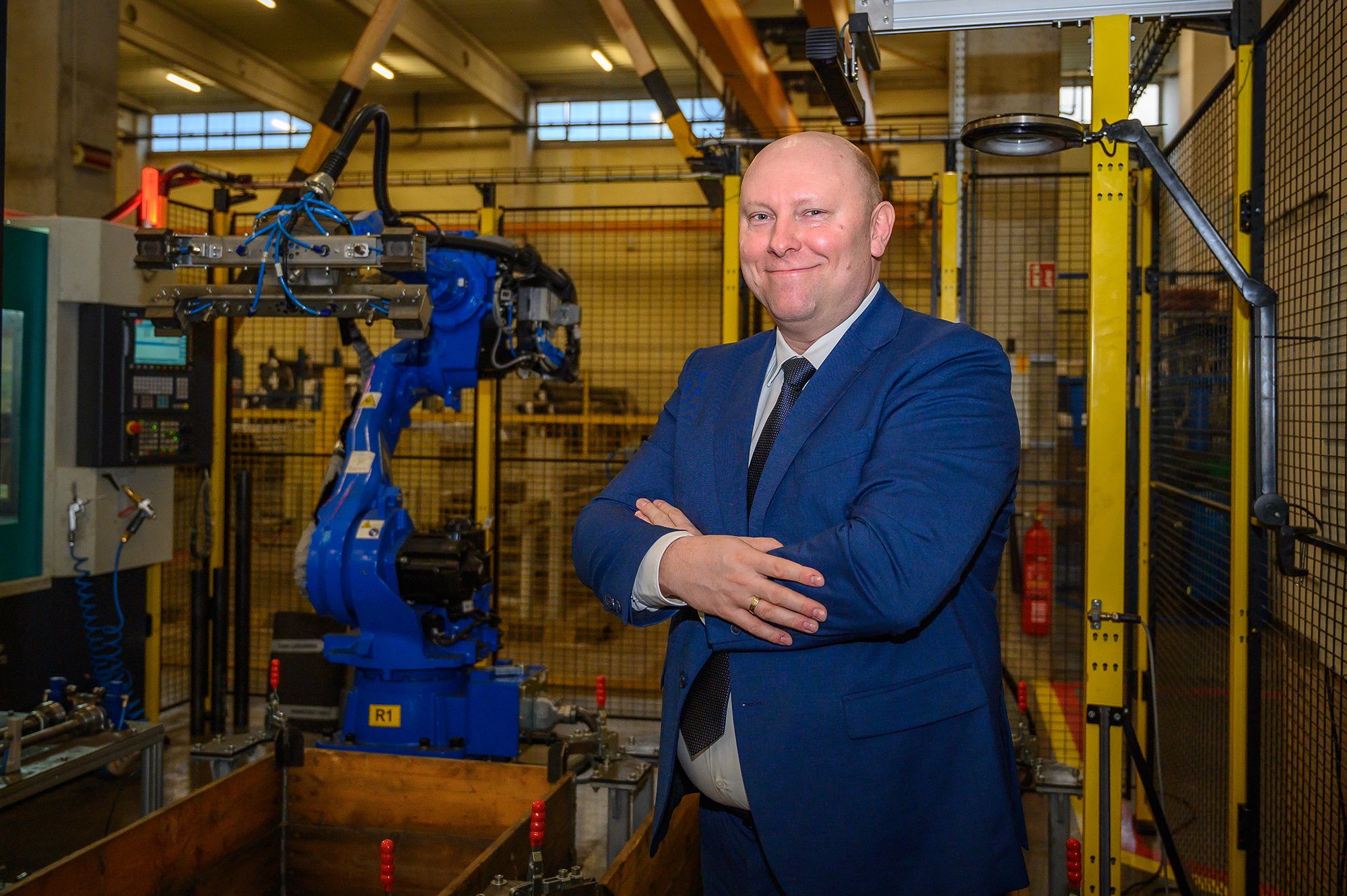
Recently, the Van Leeuwen companies in Hungary and Slovakia were brought together under a single management structure to enhance efficiency and cooperation. It was a strategic move designed to not only streamline operations but also to pave the way for a joint approach to offering a wide range of specialized tube processing services to customers. Lajos Siebel is Managing Director of the two companies.
Lajos knows steel: he has worked in the industry for almost 20 years since graduating from Budapest University of Technology and Economics. In 2014, he joined the company as Commercial Manager. Today, he is the Managing Director of Van Leeuwen Hungary and Executive Director of Van Leeuwen Production in Slovakia.=
Future growth and success
Lajos has seen a lot of changes in the organization. ‘Many activities, such as tube cutting, deburring, washing and drilling have remained unchanged,’ says Lajos. ‘But we also offer specialized services like tube bending and 3D laser processing. However, around 40% of our sales now comes from customer-dedicated stock.’ The Automotive sector without question is the region’s most important customer. The main component manufactured here is the cross car beam, a complex structural element that contributes to a vehicle’s stability and safety and also supports a vehicle’s other essential components. ‘In recent years, we have managed to really grow our business in the Automotive sector,’ says Lajos.
‘We now are also active in the Process & Power market segment in this region. And more recently, we began specializing in Automotive stainless steel fuel lines.’
Adopting new technology to cater to changing market demands
Lajos sees many more changes coming on the horizon. ‘The Automotive sector is changing,’ he says. ‘The combustion engine is gradually being replaced by the electric engine, and that is already having an impact on what we produce here.’ Over the last two or three years, we have produced more and more components for car manufacturers, from towing hooks and cross bars to customized bent tubing for hydraulic hoses. Technology is partly driving these developments. ‘Two years ago, we introduced a vertical CNC machine to drill holes into cross tubes,’ Lajos explains. ‘We then implemented an automatic robot cell. Basically, we equipped the CNC machine with a robotic arm. It was a great decision. It automates manual tasks, improves precision, and speeds up changeovers. Best of all, it frees up workers to do other more interesting and better things.’
A brighter, more specialized future
Another significant shift in the industry is the importance of the traceability of parts. Lajos is close to finalizing the first steering unit application for Bosch Automotive, which integrates new e-shaft technology. It is a huge development that could lead to a long-term contract. The plans include implementing increasingly more new technology, such as tube turning with laser QR coding. Lajos is clearly optimistic about the future of this new Van Leeuwen region in Central Europe. ‘Bringing Hungary and Slovakia under one managerial umbrella enhances cooperation, both in production as well as in sales, to accelerate growth in our production activities and enabling us to offer even more specialized services to our customers. This is just the start of our journey, but already I can see great things ahead.’
Knowledge sharing and mutual growth
Van Leeuwen’s Central European region offers a wealth of opportunities for knowledge sharing and mutual growth. It all started in 2005, with offices in the Czech Republic and Poland. Today, the region boasts three production units, two distribution centers and one sales office. There are locations in Hungary, Slovakia, Slovenia, Poland and the Czech Republic, as a result of which local customers receive comprehensive and focused services.
‘We continue to focus on our core activities; processing pipes,’ says Lajos Siebel, ‘but we also have access to a broader scale of products and a robust trade and distribution network. This has increased our purchasing power and doubled our sales volume here in Central Europe. Furthermore, we can keep learning from our colleagues all over the world. That benefits all of us.’
Robotic production of towing hooks
In Hungary, supplying parts for towing hooks for well-known automotive brands is a Van Leeuwen success story. ‘We started developing products such as cross tubes about three years ago, and sales have been increasing ever since,’ says Lajos Siebel. ‘But things really took off when we roboticized our activities in 2022. Production volumes increased by 150 percent, processing is done with greater precision, and manual labor is minimized.’
Lajos is justifiably proud of the company and his colleagues. ‘We supply about 60% of the towing hooks used by a large electric vehicle manufacturing company.’ A large German car manufacturer is another major OEM that assembles cars using Van Leeuwen products. It uses the towing hooks on all its cars, electric, hybrid and combustion, thanks to the interchangeability of parts. However, the total weight of a car or bicycle is important to OEMs. This is why they sometimes order slightly different sizes. ‘It may be just one millimeter thinner,’ says Lajos, ‘and that alone already means we have to supply a completely new product.’